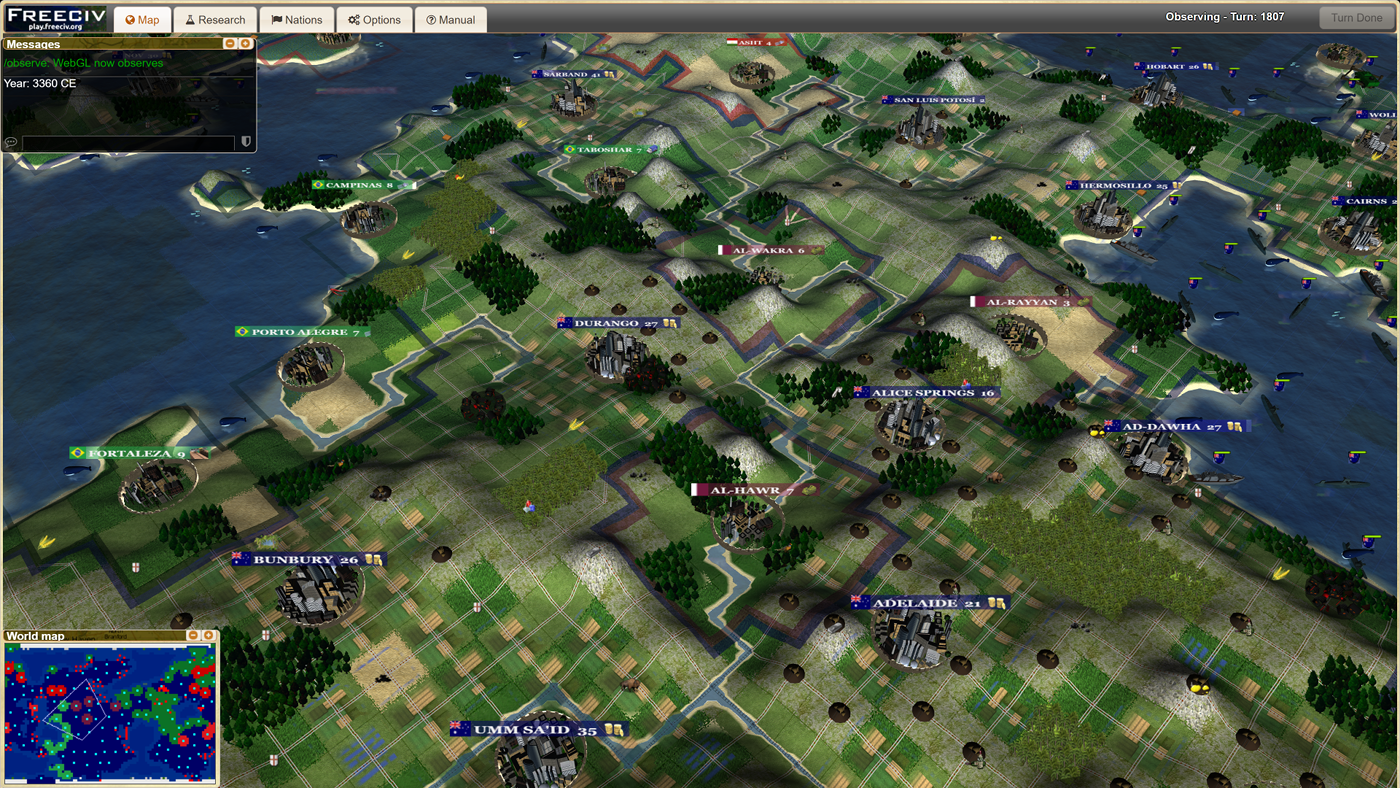

Cities may be built on any terrain except Inaccessible, Lake, Ocean, Deep Ocean, or Glacier. Squares within range of a city may be worked. With bridge building, roads and railroads can be built on river squares to bridge them. instead of 1 mp a unit will spend 1 1/3, and intead of 3 will spend 4 1/3).Ĭities always have roads inside (unless the city is on a river tile and has never been owned by a nation with the bridge building technology) - and railroads, when their owner has that technology - which will connect to (rail)roads built adjacent to the city.

roads, which can be built by workers, settlers, and engineers.

rivers, which are natural features that cannot be altered (except by transforming land to sea and back again), and.Other land units move for only 1/3 point per square along:.The explorer, partisan, and alpine troops travel light enough that moving one square costs only 1/3 point (except that they can use railroads like anyone else).The cost for each difficult terrain is given in the catalogue below. Moving across easy terrain costs one point per square moving onto rough terrain costs more.Terrain really only complicates the movement of land units. Sea and air units always expend one movement point to move one square - sea units because they are confined to the ocean and adjacent cities, and air units ignore terrain completely. With at least one movement fragment, a unit may always move to an adjacent tile if it is possible at all. A movement point contains a certain number of movement fragments (3 in Classic ruleset) that are the minimal quantums of movement. the terrain-specific bonus is multiplied by 1.5.)Įach unit gets a limited number of movement points for a turn that depends on its class and sometimes health, veterancy and its owner's advances and wonders the points can be spent on any actions but they are not transferred between turns. (Rivers offer an additional defense bonus of 50%, i.e. See the page on combat for details, and the catalogue below for which terrains offer bonuses. Terrain affects combat very simply: when a land unit is attacked, its defense strength is multiplied by the defense factor ("bonus") of the terrain beneath it. Terrain serves three roles: the theater upon which your units battle rival civilizations, the landscape across which your units travel, and the medium which your cities work to produce resources. Other topologies are available as a server option.Įach square contains some kind of terrain, and together they form larger features like oceans, continents, and mountain ranges. By default, the Freeciv world is made of squares arranged in a rectangular grid whose north and south (or sometimes east and west) edges end against the polar ice, but whose other two edges connect, forming a cylinder that can be circumnavigated.


 0 kommentar(er)
0 kommentar(er)
